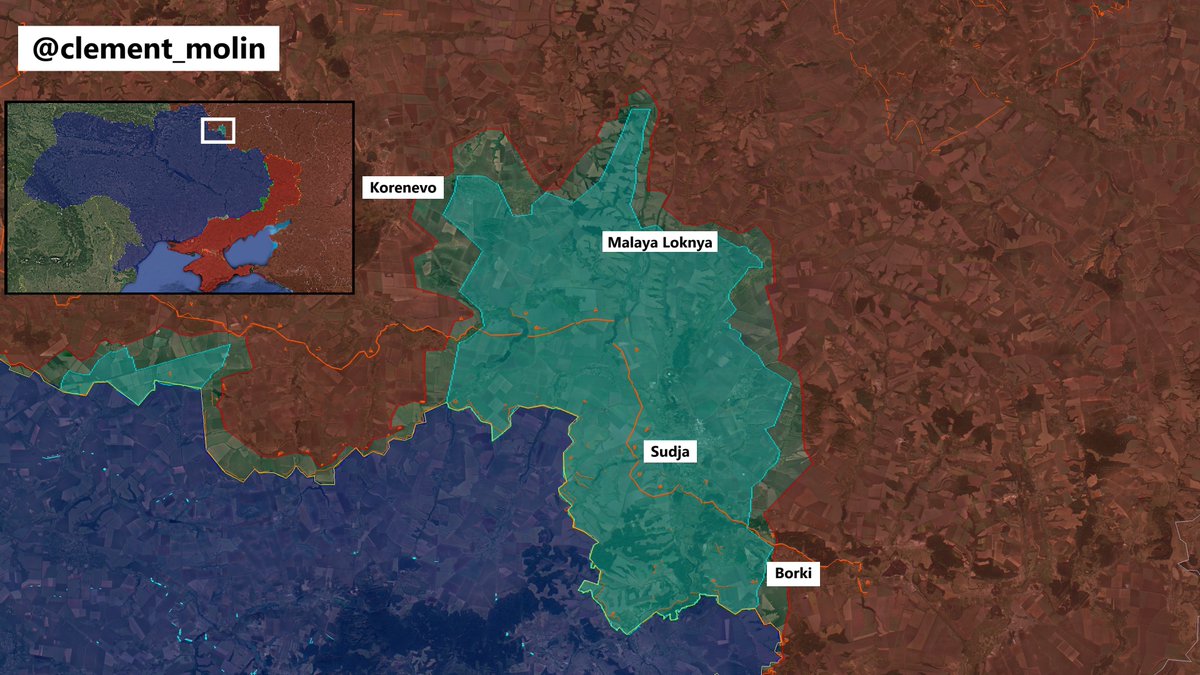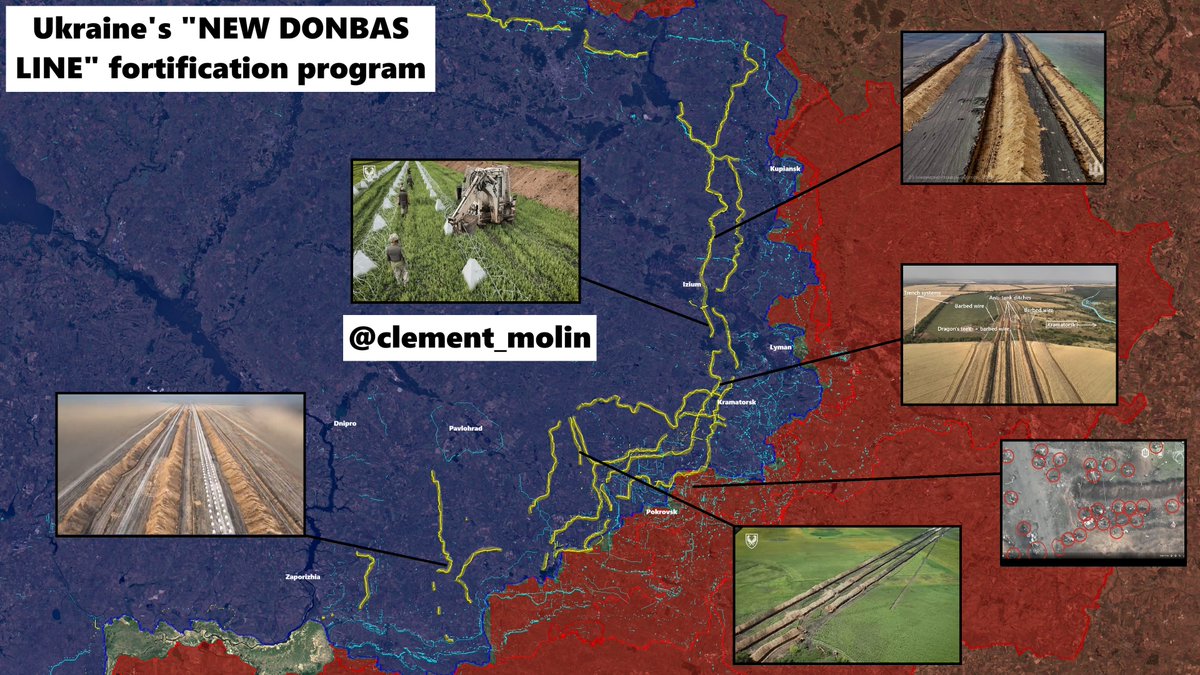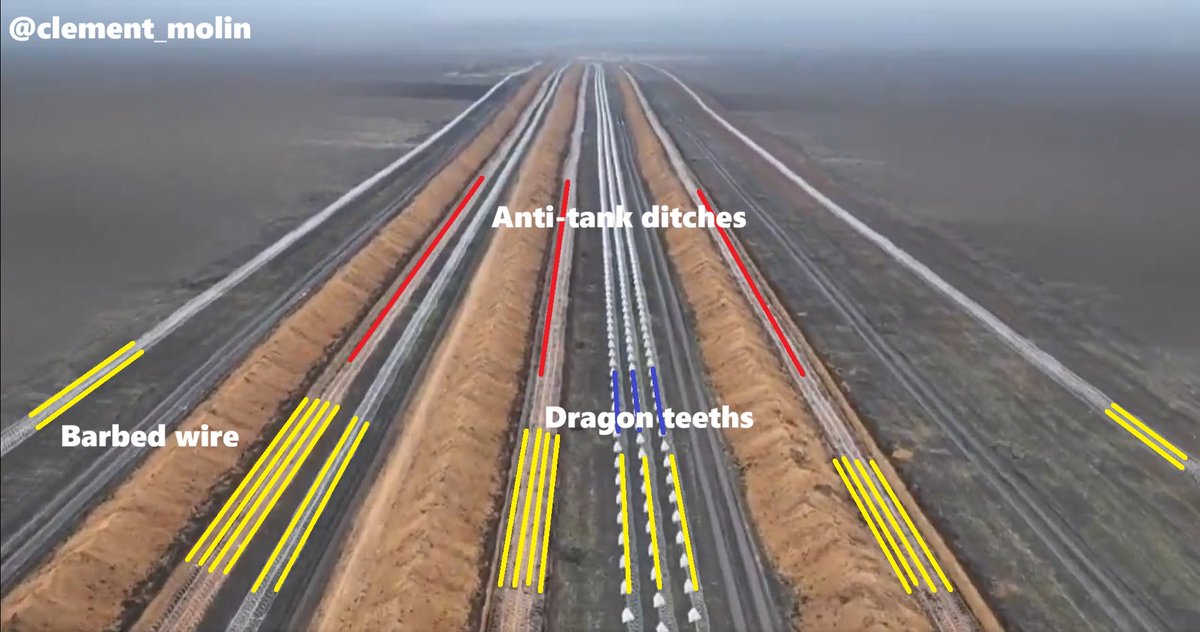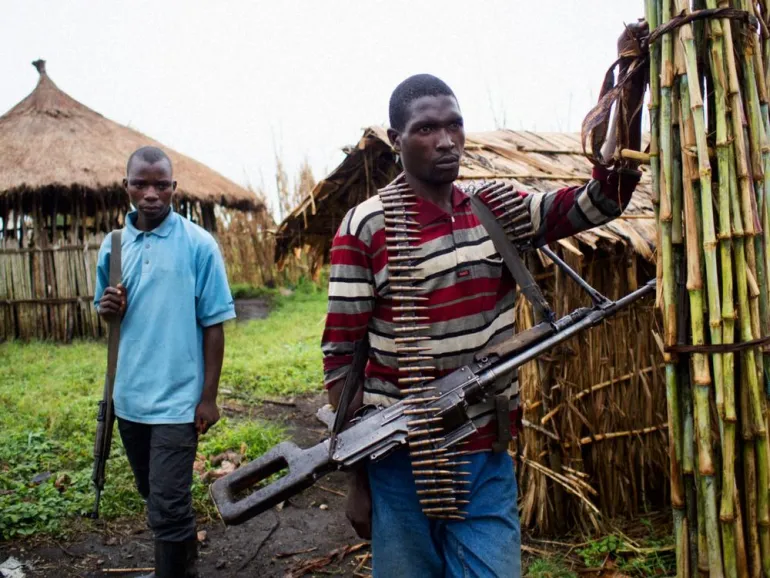A week ago, Russian 🇷🇺 armed forces launched a large counter-offensive to take back the territory they lost in #Kursk oblast.
At the same time, Ukrainian 🇺🇦 armed forces tried to trap these russian forces, launching their own offensive.
🧵THREAD🧵1/13 ⬇️
At the same time, Ukrainian 🇺🇦 armed forces tried to trap these russian forces, launching their own offensive.
🧵THREAD🧵1/13 ⬇️

This week has seen many fightings in the western part of ukrainian presence of Kursk oblast. Russian offensive had initial successes, and broke through the defenses of the 103rd territorial defense brigade south of Korenevo, taking some prisonners.
Two main units were engaged in the counter-offensive : VDV of the 51st Airborne Regiment and Marines of the 155th Naval Infantry Brigade.
In two days, they took back Snagost and small villages near the Seym river. Ukrainian 501st Marine batallion of 36th Marine had to withdraw.
In two days, they took back Snagost and small villages near the Seym river. Ukrainian 501st Marine batallion of 36th Marine had to withdraw.

The days after, VDV launched new attacks toward Liubimovka, while 155th Marines managed to enter Gordeevka, Veznapnoe, Apanasovka and Obukhovka.
Here is a video of the assault on Liubimovka and a BMD of the VDV getting hit by a FPV drone.
Here is a video of the assault on Liubimovka and a BMD of the VDV getting hit by a FPV drone.
Ukrainian command was unable to keep its positions, which were in fact strategic. The Glushkovo district (on the west) was nearly encircled (only pontoon bridges on the Seym river were allowing supply).
Russian army amassed thousands of men there to avoid losing it.
Russian army amassed thousands of men there to avoid losing it.
Ukrainian command decided to mobilize 21st mecanized brigade, 225th Assault Batallion and 95th Air Assault brigade to launch an attack directly on Glushkovo.
Here is a good thread by @Danspiun including all the geolocated footages of this area.
Here is a good thread by @Danspiun including all the geolocated footages of this area.
https://x.com/Danspiun/status/1834710817922859271
Here is a map of the Ukrainian assault on Veseloe south of Glushkovo. They may be a little more in the north, but I don"t have proofs for now. 

Today, we spotted this ground drone attacking the western flank of this attack. The use of unmanned systems like this one allows Ukraine to keep its men safe.
During this assault, we saw Swedish CV 9040 and STRV 122 (Leopard 2). Some CV 9040 and STRV 122 were lost during the assault.
Russia tried to counter-attack multiple times there but failed to take back territory lost. The Glushkovo pocket is now at a high risk of being encircled.
I said multiple times russia has to hold there, because if they loose the pocket, it will be very difficult to take it back.
I said multiple times russia has to hold there, because if they loose the pocket, it will be very difficult to take it back.
On the other side of Kursk frontline, Russian forces took back Borki. Sudja is still far from Russian forces.
The ukrainian presence in Kursk has decreased recently, however, russian army is still on a difficult position on the western part.
The ukrainian presence in Kursk has decreased recently, however, russian army is still on a difficult position on the western part.

Today images from ©Planet show a lot of bombing east of the current russian presence and some recent russia attacks (we can see the scars in the corn fields + the roads used by Ukraine on the border.




I'm now going to update Pokrovsk fortifications since today sentinel-2 does not have any cloud.
You can follow @atummundi (where i also write) and follow me on my LinkedIn () linkedin.com/in/cl%C3%A9men…

You can follow @atummundi (where i also write) and follow me on my LinkedIn () linkedin.com/in/cl%C3%A9men…

• • •
Missing some Tweet in this thread? You can try to
force a refresh





















